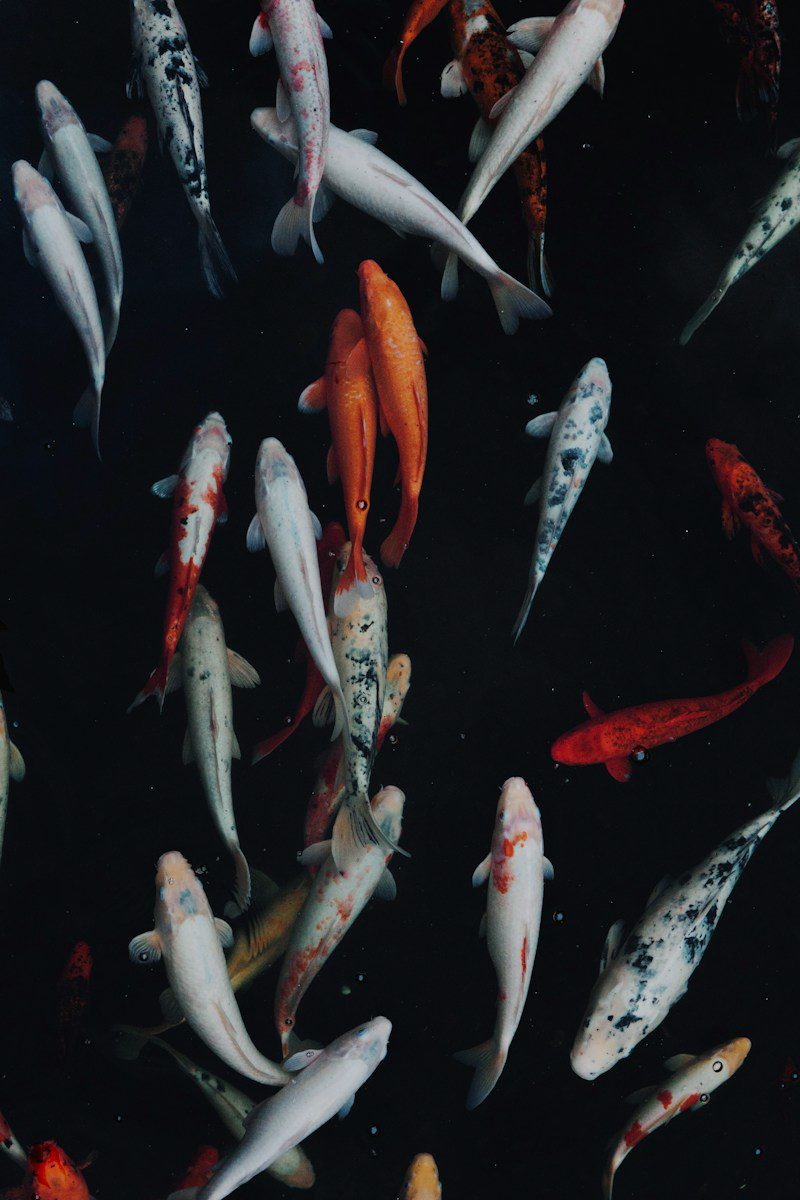Introduction to Koi Fish

Koi fish, originating from Japan, are aquatic creatures known for their stunning appearance and deep symbolism.
In India, Bengali people particularly favor black koi fish.
Various dishes are prepared using different varieties of koi fish like tel koi recipe
Understanding the Historical Significance and Symbolism of Koi Fish
Origins and Evolution
Koi fish have a rich cultural history in Japan, originating from common carp in the 19th century. They symbolize various virtues and beliefs.
Cultural Importance
In Japanese culture, koi fish are revered symbols of luck, resilience, and prosperity. They are believed to bring harmony and success.
Diverse Varieties of Koi Fish
Some of the common varieties include:
Koi fish come in various varieties, each with its unique and beautiful appearance.
Some of the popular varieties of koi fish are listed below:

1. Kohaku: These koi fish have a white body with red markings, which makes them one of the most classic and popular varieties.
2. Taisho Sanke: Similar to Kohaku, Taisho Sanke has white bodies, but with the addition of black markings along with the red.
3. Showa Sanshoku: These koi fish have a black base color with red and white markings, creating a striking contrast.
4. Ogon: Known for their metallic scales, Ogon koi fish come in various single solid colors like gold, platinum, or silver.
5. Chagoi: Chagoi are earth-colored koi fish that range from a coppery brown to a deeper green shade, known for their friendly and docile nature.
6. Bekko: Bekko koi fish have a solid base color (white, red, or yellow) with black markings on their scales.
7. Asagi: These koi fish have a blue-grey net-like pattern on the top with a red or orange underside, resembling a sunset.
8. Kikusui: A crossbreed between Kohaku and Asagi, Kikusui has a Kohaku pattern with light blue or grey netting over the white areas.
9. Shusui: Similar to Asagi, Shusui has a blue net-like pattern but lacks the red or orange underside.
10. Tancho: Tancho koi fish have a single red dot on their heads and are named after the Tancho crane, a symbol of Japan.
These are just a few examples of koi fish varieties, and there are many more to discover.
Habitat Requirements and Care
Maintaining a healthy environment is crucial for koi fish. Adequate pond conditions, proper filtration, balanced nutrition, and regular maintenance ensure their well-being.
Breeding and Lifecycle of Koi Fish
Despite their resilience, koi fish can face health issues. Proper care and preventive measures are vital for maintaining their vitality.
FAQs
Q: Are koi fish difficult to care for as pets?
A: Providing proper care and maintaining a suitable environment ensures their well-being as pets in ponds or gardens.
Q: What are common health issues faced by koi fish?
A: They may encounter diseases like Ich or bacterial infections. Regular observation and proper treatment help prevent such issues.
Q: How long is the lifespan of koi fish?
A: Under ideal conditions, they can live for several decades, with some living beyond 50 years.
Q: Do different-colored koi fish hold different meanings?
A: Yes, various colors symbolize different traits in different cultures, like red for energy and black for success.
Q: Can koi fish adapt to different climates?
A: While they can adapt, they thrive best in moderate climates.
